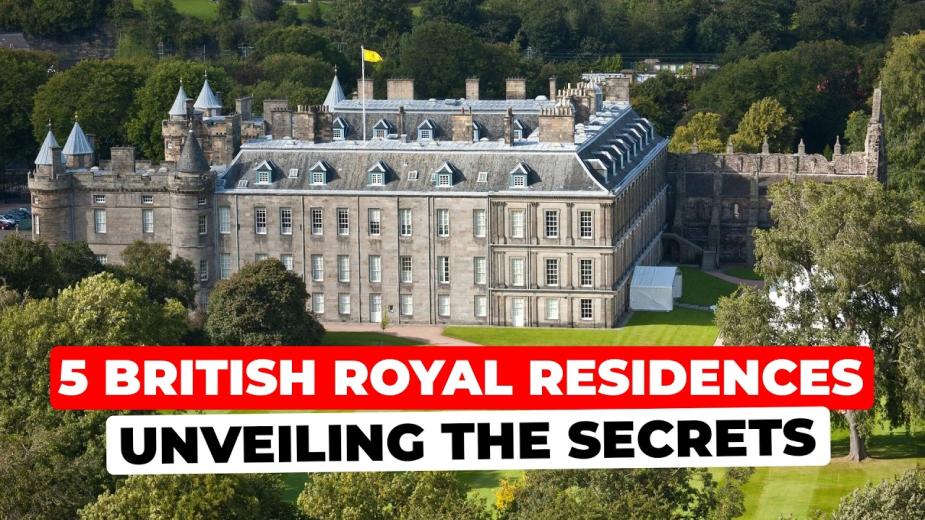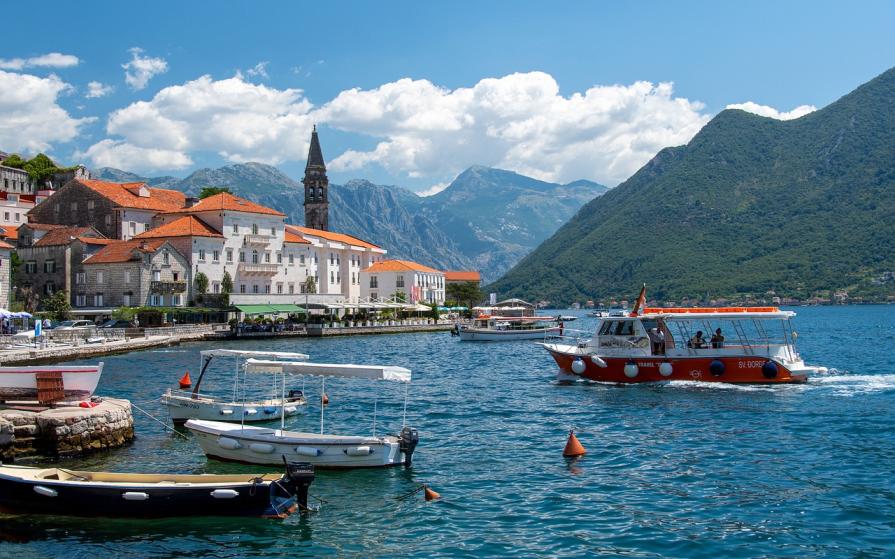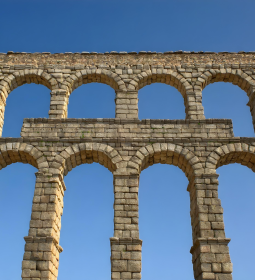Stunning mountains, beautiful bright bays overlooking the Adriatic Sea, old Venetian villages, small cozy towns. This gorgeous country with an abundance of natural and man-made wonders is quickly gaining a reputation as a great travel destination. The mountainous area is surrounded by deep canyons, turbulent rivers, glacial lakes, virgin forests. The winding coastline is flanked by glittering ports, from the ornate Perast Palace in the UNESCO-protected Bay of Kotor to Tivat, a lavish marina. Bustling with new five-star luxury hotels and high-end international restaurants, Montenegro is a vibrant corner of the Adriatic.

Climate and nature of Montenegro

The country is distinguished by two types of climate: seaside and alpine. The coast has a pleasant Mediterranean climate with 240 days of sunshine a year, hot and dry summers with temperatures of 30-35ºC, mild and humid winters. Podgorica, the capital of the country, is one of the hottest in Europe in summer with temperatures sometimes above 40ºC. Rising in the summer to an altitude of over 1200 m, you will feel the coolness of the fresh mountain air; the temperature here rises to 25ºC.
Limestones rise above the coastline, in the central region are the fertile plains of Zetsk and Belopavlichka, as well as a bird's paradise - Lake Skadar, followed by a wreath of mountain ranges over 2000 meters high. In addition to the peaks, they are decorated with forests, spacious pastures, forty lakes, rough, clear rivers, deep and mysterious canyons. There are five national parks in Montenegro, for example:
- Durmitor with the Tara river canyon is part of the World Natural Heritage
- Tara river canyon - one of the international biosphere reserves
- Lake Skadar is included in the Ramsar List as a rare example of wetlands.
The intertwining types of climate, the constant alternation of southern / northern air currents make these areas suitable for more than 3000 plant species, including endemic and relict species. Here is a wealth of medicinal and aromatic herbs, wild fruits and edible mushrooms. Dark coniferous forests (spruce, pine, fir) are credited with the name of the country - Montenegro. There is also one of the two virgin forests in Europe - Biogradska Gora.
On the territory of Montenegro, there are more than three hundred species of animals, including rare ones. In addition to wolves, bears, chamois, fallow deer, martens, lynxes, there are otter, vulture, golden eagle, peregrine falcon, hawk, crested duck, Apollo butterfly, rocky mole, alpine shrew, common lacewing, snakes, lizards, alpine newt.
The most popular cities and villages in Montenegro
Montenegro is famous not for large cities, but for small towns with ancient buildings, fortresses, seaside villages, and cozy villages.
Sveti Stefan

The island of Sveti Stefan, whose history dates back to the 15th century, is a stunning and iconic Montenegrin landmark steeped in culture. The island is located on the banks of the Budva River, with quiet pebble beaches and sparkling blue waters. The former fishing village was first inhabited in 1442, when a wall was built around the island to protect the locals from Turkish invasion. The island is now home to the luxury resort Aman Sveti Stefan, which has hosted stars from Claudia Schiffer to Marilyn Monroe. The islet is connected to the mainland by a private beach road, so visitors to Sveti Stefan can stroll around and admire four small churches. Relaxing on the public beach opposite the dam is a great way to enjoy the breathtaking views of the charming city.
Ulcinj

The southernmost city in Montenegro, Ulcinj is a dynamic coastal city with a varied heritage and a warm atmosphere. Due to its proximity to Albania, many Muslims live here and the influence of the Middle East is felt - there are authentic Arab restaurants, numerous beautiful mosques. Ulcinj is the center of historical architecture, combining Roman, Byzantine, Venetian, Ottoman influences, it is a melting pot of various styles of construction, ancient ruins. The Museum of History and Local Lore is a great place to start acquaintance with the history of the city.
Rose
Rose is a cozy fishing village with a picturesque port, located away from the beaten tourist routes, which manages to convey a true sense of serene loneliness and peace. Quiet bays, sandy beaches, tranquil observation platforms allow visitors to experience the natural charm of Montenegro without the hustle and bustle of big cities. This gives guests the opportunity to experience real Montenegrin village life: stroll through the Old Town, explore quaint streets, ancient buildings, explore the former medieval fortress of Rose (now a restaurant). The picturesque town right on the coast is a great place to eat fresh local seafood and one of the popular diving spots.
Tivat

Tivat is a beautiful city at the foot of the Vrmac Mountain, a popular destination for tourists and climbers. With a quiet coastline lined with palm trees, Tivat comes alive in summer: people flock here from the hinterland to enjoy the sunny weather, the feeling of summer. Tivat, with its own stretch of unspoiled sandy beach, is a Montenegrin paradise, ideal for a beach holiday, surrounded by mountainous surroundings. The resort offers water sports - kayaking, wakeboarding, trimaran.
Kotor

The charming coastal town of Kotor attracts with impressive sea and mountain landscapes, a quiet bay surrounded by the limestone cliffs of Lovcen and Orjen. As a UNESCO World Heritage Site, the Kotor region offers unforgettable views, fascinating history and culture. First conquered by the Greeks around the 4th-7th centuries. BC, the city was once a fortified village surrounded by walls 20 meters high. For centuries the city was ruled by Venice, the Ottoman Empire and Napoleon, and today visitors can stroll through quaint narrow streets and alleys, visit the main square, the Piazza of Arms, as well as the nearby gateway to the city.
Savina
Across the bay from Rose is Savina, a tiny town surrounded by lush green forests and mountains. On the seaside is the shining Savina, a 15th century Serbian Orthodox monastery. Savina overlooks the calm blue waters of the Bay of Kotor, impressive snow-covered mountain slopes - one of the most stunning landscapes in the Balkans.
Savina is suitable for wine lovers: the fabulous Castel Savina vineyard is located here, where guests can sit in a quiet landscaped garden overlooking the water, taste a variety of delicious vintage wines - from an elegant Cabernet Sauvignon to a refreshing rosé grenache.
Budva

Budva is located on the Adriatic coast with an impeccable sandy beach overlooking the water, making it an ideal destination for sun lovers. Budva with the ancient old town in the center has been perfectly preserved since the Middle Ages. Historical sources date the city to the 5th century BC, and visitors enjoy many ancient churches, stone buildings, winding cobbled streets, fine restaurants, cafes, shops, the Maritime Museum. Budva, with its typical Montenegrin buildings with red roofs and stone walls, is an ideal base to explore the city. For those looking for a vibrant Montenegrin experience, the summer months are perfect when Budva hosts the Sea Dance Festival, an exciting international music festival on Jaz Beach.
What to do in Montenegro
Montenegro offers a varied vacation, but still it is mainly built around the natural beauty of the country - mountains, sea, protected forests.
Skadar lake

The lake in this national park is huge: 400 km² of water, birds, carpets of lilies and the background - "Damned mountains", reflected in the mirror surface of the lake. All this makes it a paradise for rowers, photographers and swimmers.
Bird watching
Lake Skadar, the Boyana delta and the salt flats of Ulcinj are important bird areas. It is home to the great flamingo, the Kentish plover, the rare Dalmatian pelican and the pygmy cormorant - a total of 280 different species. Just grab your binoculars and go on a tailor-made hike with local expert bird watchers.
Climbing Mount Lovcen

The lower hills can be reached from the Bay of Kotor along the axial paths created during the Austro-Hungarian era and starting from the old fortress in Kotor. Leave room for cheese and ham in your backpack - many mountain huts sell local produce along the way. It's a long journey, about ten hours to the top and back, but the views are worth it.
Wine
The Skadar Lake District is the wine country of Montengro, where you can tour over 30 small wineries. And given that the locals never leave a guest's glass empty, you will 100% enjoy the wine tour! Vranats and Kratosie are local pride and grow in stunning locations around the lake and mountains.
Cycling

The coastline of Montenegro is great for cycling, with routes running along stunning bays, cliffs, the Mediterranean coast, including the Bay of Kotor, a UNESCO World Heritage Site. Tourists ride along the coastline of Lake Skadar, the largest in the Balkans, climb the Budva mountains.
National parks
There are five national parks in Montenegro: Lovcen, Durmitor, Biogradska Gora, Skadar Lake, Prokletije. All parks have hiking and cycling trails.
Drive through the Balkans
In two weeks, you can without haste inspect four countries at once: Bosnia and Herzegovina, Croatia, Serbia, Montenegro.
Culture

Montenegro is full of all kinds of cultural wonders: the former capital of Cetinje, its ancient surroundings, which combined the Ottoman heritage and Orthodox Christianity.
Casino
We know about gambling in Montenegro from the James Bond movie Casino Royale, so fans of roulette and poker will have something to do during their holidays.
Food in Montenegro
Food in Montenegro is amazingly tasty, and food prices are almost three times cheaper than in Croatia.
- Burek is a delicious breakfast, quick and cheap, although it can be eaten for lunch or dinner. Bureks are sold in every bakery in Montenegro and come with three different fillings: cheese, meat, spinach. Some bakeries add cheese to spinach and meat burek, which is always nice. Cost - 1-2 €, depending on the size.

- Salad + seafood is a favorite combination for lunch. The best fish dishes are served in backyard restaurants or waterfront cafes. Seasonal Salad - Large slices of tomato, cucumber and onion are sprinkled with soft local cheese and served with bread. Cost - 3-4 €.
- The menu of any cafe in Montenegro contains at least three types of fish : fried smelt, fried large fish, whole baked fish. The cost is 4-15 €.
- Fresh mussels are one of the favorite dishes of Montenegro. It uses a minimal amount of seasoning, leaving the food fresh and natural in taste. Cost - 4-8 €.

- Risotto with black cuttlefish . Montenegro is the perfect place to try squid ink risotto! This delicious dish may seem strange, but the main thing is to check your teeth after eating, as they will turn black as coal from natural dye. Price - 6-10 €.
- Assorted meat - a plate with several types of smoked meats and thick, but not very hot spices. All appetizers are a great addition to french fries and salads.
- Chewapi - Grilled meat served with French fries, soft cheese, onions and a vegetable mixture. There are two ways to order this Montenegrin food. Chevapi in bread, 3-5 euros - a classic Montenegrin lunch, a popular choice with travelers and locals. Plate of chevapi, 5-8 euros, served with crispy fries. In the best Cevapi restaurants, customers choose their own sauces and vegetables.

Transport in Montenegro
In Montenegro, bus travel within the country and abroad is well organized. The main center of Montenegro is Podgorica, the capital of the country, from here there are daily buses to large and small cities of the country: Herceg Novi, Budva, Ulcinj, Kotor, Tivat on the coast, Niksic, Pljevlja, Bijelo Pole - in the continental part. The number of bus lines within the country increases in summer, especially to tourist destinations.
Almost all major cities have bus stations. The Podgorica bus station is best equipped: it is located opposite the railway station, has several ATMs, a small restaurant, its own post office, several small shops, a travel agency, wireless Internet, and a luggage storage space.
In a small town, you wait for the bus at a stop and wave your hand when it pulls up.
Montenegro mobile network

More than 93% of Montenegrins use mobile phones. Three providers operate mobile networks:
- Telenor
- T-mobile
- M: Tel.
The first two are branches of international European operators, their offices are located in close proximity to any city, including on the coast. All three are nearly equal in signal quality. Since 2009, Montenegro has been using the 3G standard, video calls, high-speed mobile Internet are available. Since 2011, 3.5G (UMTS, HSDPA) has been introduced to increase the speed of mobile connections.













